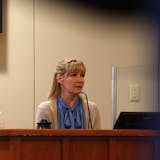When identifying top workplaces, think of two basic types of factors:
"Me factors" — my career, my pay, my manager — that speak to the individual's needs at work.
"We factors" — where are we headed, how are we are getting there, are we making a difference — that speak to their higher aspirations.
Doug Claffey, CEO of WorkplaceDynamics, the survey firm that has conducted the Star Tribune's Top Workplaces research for the past four years, calls the "me factors'' table stakes — necessary but not sufficient for a top workplace.
It's the "we factors" that distinguish a top workplace from a mediocre one.
"You cannot pay more money to get someone to remain engaged in a bad workplace," Claffey said. "Fundamentally, most people are not going to get excited about making more money. They get excited about doing something meaningful with people they believe in and enjoy working with."
This survey is about companies whose employees have awarded them high marks. It's a "good-to-great" ranking, not a "worst-to-first" competition. Companies chose to participate in the survey. Response has been enthusiastic.
Claffey said that 300 Minnesota companies participated in the 2013 program — "more than in any other market we survey, including Boston, Chicago, Dallas, Houston and Atlanta.''



